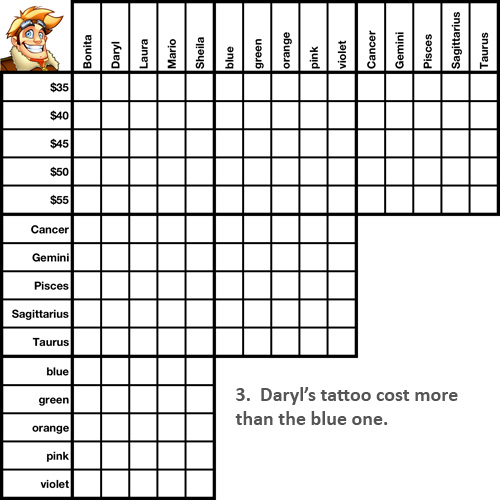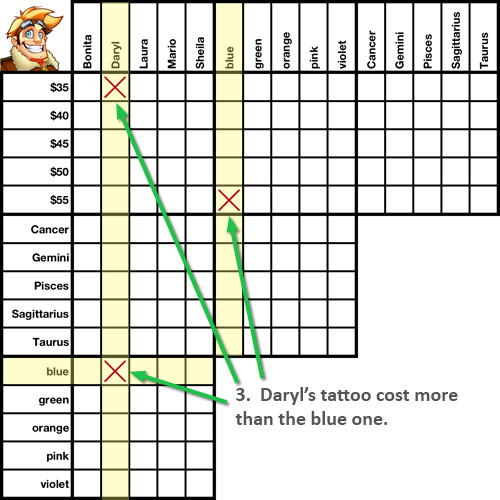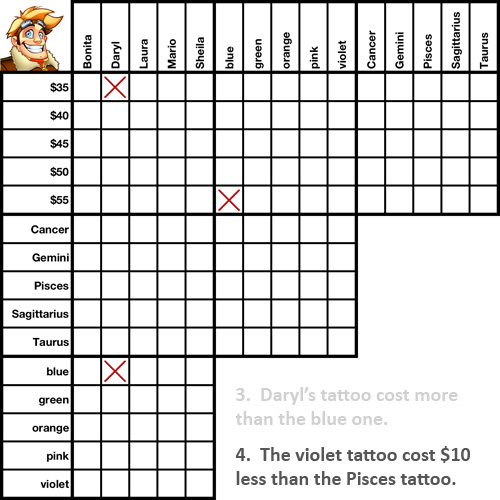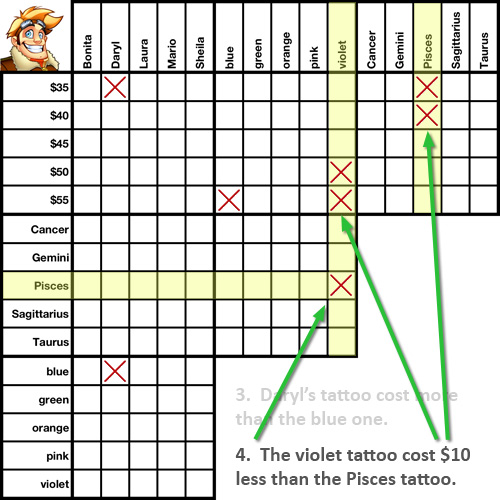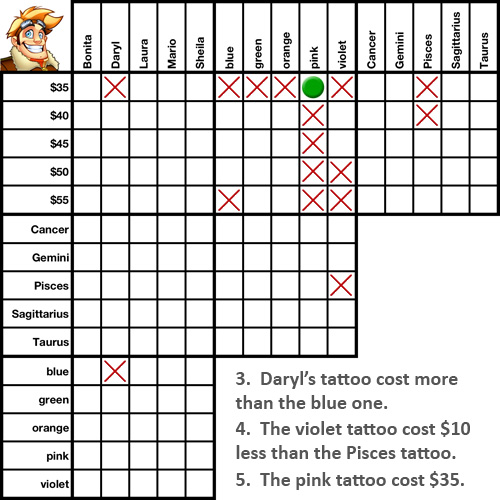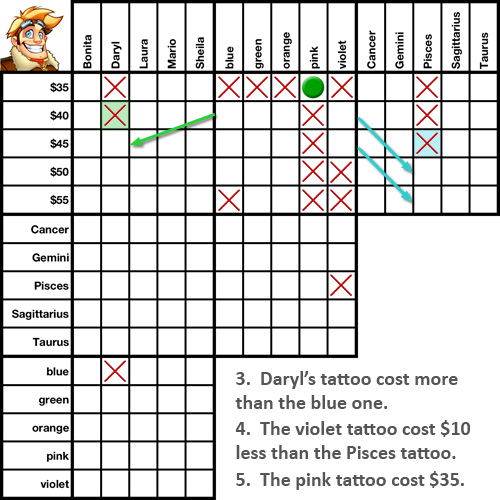Some clues will give you quantitative relationships between two items, instead of just a simple true or false relationship. These are what we call "greater/lesser than clues."
They come in two flavors: "vague" and "specific". A vague clue tells you A is greater/lesser than B, but doesn't tell you by how much.
Here's an example of a "vague" greater/lesser than clue: "Daryl's tattoo cost more than the blue one."

